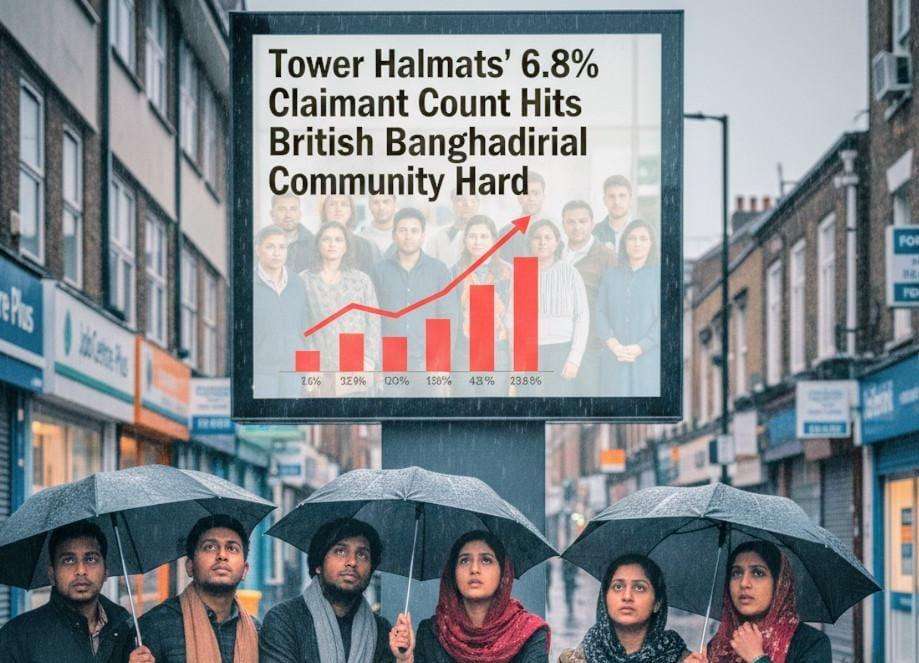A comprehensive review of the latest government data on poverty and local statistics paints a stark picture of widening social inequality across the United Kingdom, revealing that the crisis is disproportionately concentrated in areas with high ethnic minority populations, particularly Muslim and British Bangladeshi communities. While the most acutely deprived individual neighbourhood remains Jaywick in Essex, the analysis of the Indices of Multiple Deprivation (IMD) highlights an alarming geographic and ethnic pattern of concentrated poverty.
The data confirms a critical finding from the 2021 Census: an overwhelming 39% of the Muslim population in England and Wales resides in the country's most deprived areas. This ethnic disparity is most acute within the British Bangladeshi community, with nearly one-fifth of the group living in the most overall deprived 10% of neighbourhoods nationally, a figure significantly higher than the average. This concentration of hardship is clearly visible in the major urban hubs of London and the North.
The London Divide: East London's Burden
In London, the crisis is geographically fixed within an 'arc of deprivation' stretching across the inner East and North East. The borough of Tower Hamlets stands out as an epicentre of this challenge. Despite some relative improvement in overall rankings compared to a decade ago, the borough still ranks second nationally for income deprivation, with a staggering 40.1% of its households suffering from income-related poverty.
In the most severely deprived corners of Tower Hamlets—neighbourhoods clustered around areas like Lansbury and Mile End—the Bangladeshi population accounts for nearly half of all residents, demonstrating the profound overlap between the British Bangladeshi community and extreme poverty in East London. Other inner London areas showing high levels of combined ethnic minority population and deprivation include Newham, Hackney, and parts of Haringey like Northumberland Park.
Further south, the borough of Croydon continues to battle significant deprivation, ranking as the most deprived of the Southern London boroughs. Local data shows the stark reality within its own boundaries, with the ten most deprived areas consistently registering high levels of hardship. The worst affected area in the borough is the University Hospital & Queen's Road neighbourhood, which tragically ranks among the top one per cent of most deprived neighbourhoods in the entire country. The list of Croydon's most deprived neighbourhoods continues with specific pockets like New Addington South, Thornton Heath Central, and New Addington North, illustrating entrenched poverty that impacts multiple domains, from education and crime to health and living standards.
National Hotspots and Immigrant Hardship
Beyond the capital, the local authorities carrying the heaviest burden of deprivation are predominantly located in the North and Midlands. Local Authority Districts (LADs) such as Middlesbrough, Birmingham, Hartlepool, Kingston upon Hull, and Manchester consistently feature as the most deprived in England, often hosting high concentrations of both Muslim and other immigrant-populated communities that grapple with poor socio-economic outcomes. Areas within these cities, including eight neighbourhoods in Blackpool and the Anfield area in Liverpool, make up a significant portion of the ten most deprived small areas in the entire nation.
The evidence points to a broader trend impacting immigrant and ethnic minority groups across the UK. Statistical reports confirm that all ethnic minority groups are more likely to live in deprived neighbourhoods than the White British majority, with Pakistani, Bangladeshi, and Black African households being two to three times more likely to experience persistent, very deep poverty. This national pattern underscores the urgent need for targeted intervention to address the complex relationship between ethnic background, systemic inequality, and deprivation that continues to define the landscape of poverty in modern Britain.




.jpg)


.jpg)
.svg)




.jpg)
.jpg)